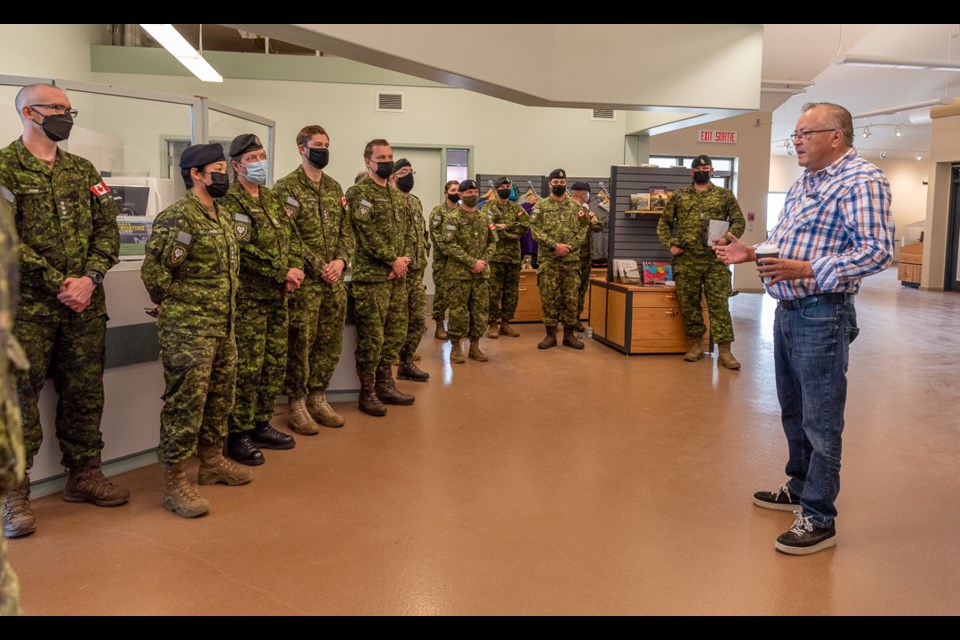BATTLEFORD, POUNDMAKER CREE NATION — Twenty-one members of 1 Canadian Mechanized Brigade, a Canadian Army formation based out of Edmonton, walked history Friday when they visited Fort Battleford, Poundmaker Cree Nation and the site of the Battle of Cut Knife Hill.
Lt-Col. Cole Petersen, chief of staff for the brigade, said their visit to Fort Battleford and Poundmaker Cree Nation was part of a professional development activity. The previous day they had visited sites including Fort Carlton and Batoche.
He said, these training exercises are not merely tours of historical battlefields, they are leadership development activities. Participants prepare by reading many hundreds of pages of historical information so they can understand what took place, then walk the actual battlefields and discuss things that were relevant back then and to them today as soldiers. They view the battlefields from such perspectives as leadership, decision-making and tactical use of the ground.
"When you combine historical study along with an ability to walk the grounds and see it as the participants in the fighting would have seen it, you get a better understanding of what took place and why," said Petersen.
With the active participation of leaders from the Poundmaker Cree Nation, an additional element was added to Saturday's "staff ride", as the activity for senior staff members was called by Petersen.
Poundmaker Cree Nation invited the brigade members to visit the First Nation and hear the oral story of what happened during the uprising of 1885, in particular May 2, a day they call "a day that went wrong."
Bryan Tootoosis, a member of Poundmaker Cree Nation and council member for 25 years, said the Canadian Army wanted to come and learn about history, so they offered to accommodate them in the spirit of truth and reconciliation.
“History and the books have one way of telling the story," said Tootoosis. "We have our oral way of expounding and explaining and articulating ourselves and this is what we're trying do, is teach our fellow public servants that would fight for our country, respecting them."
He added, "They want to learn what the truth is and we're ... willing to share that information by members of the community and myself and other elders — to share that we have so much history."
Petersen said his group had established a good relationship with Poundmaker Cree Nation.
“I've been there twice myself and visited with some of the elders who have a great knowledge, obviously, of events that took place at their home. They've agreed to host us and so, opposed to yesterday which was really driven by our own studies and our own discussions, they want to host us and share their perspectives on the battle and give us a perspective of the Indigenous part of the Battle of Cut Knife," said Petersen. "This is going to be a great opportunity for all the members of the Canadian Army that are here studying the battlefield and, you can never miss an opportunity to learn."
Eric Tootoosis, also involved in accommodating the brigade members' visit, explained the group would meet with elders and others at Poundmaker First Nation, then gather at the point of the "decoy camp," the empty camp that was attacked by Lt.-Col. William Otter, and make the trek up to the battlefield on Cut Knife Hill.
Otter was defeated at Cut Knife Hill. Eight of his group were killed as were five First Nations people.
— with files from Jayne Foster





